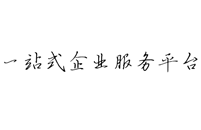The Simuwu Rectangle Ding司母戊大方鼎In 1939, a bronze ding which is an ancient cooking vessel with two loop handles and four legs was unearthed in Anyang, Henan Province. This four-legged ding known as the Simuwu Rectangle Ding was so big and heavy that it could not be moved after it was unearthed. The Japanese invaders tried several times to plunder it. To protect this rare cultural relic, the local people reburied it and then unearthed it again after China won the Anti-Japanese War in 1945. The Simuwu Rectangle Ding is now collected in the National Museum of Chinese History. The opening of the Simuwu Rectangle Ding is 110cm long and 78cm wide,its sides are 6cm thick and the loop handles are 133cm high. The whole ding weighs 875 kilograms and is the heaviest bronze ware in the world. The casting of this huge bronze vessel used over l ,000 kilograms of metal and needed 70 t0 80 crafts-men to work on it. It is the biggest bronze ware unearthed in China and also a treasure in the worlds bronze ware collection. Though the ding is big and heavy,its workmanship is exquisite.Relief of Kui (a one legged mythical animal) was carved on the four sides of the body of the ding. The animal figures are portrayed with artistic exaggeration and create a ferocious, mysterious and dignified atmosphere. Dings were used in the primitive society in China as cooking utensils. At first they were made of pottery clay. Then, as metallurgy emerged and developed, the material was changed to bronze at the end of the Shang Dynasty some 3, 000 years ago. By that time, dings had changed function to become sacrificial vessels and the symbol of their owners power and wealth. The Simuwu Rectangle Ding reveals a high level of casting technique and artistry. It represents the highest casting achievement of the Shang Dynasty. According to the archeologists, the King of the Shang Dynasty had the Simuwu Rectangle Ding made to commemorate his mother.1939年,在河南省安阳市发掘出了一件青铜鼎,该鼎为我国古代一种炊食器,有两个立耳和四足。这件被称作司母戊大方鼎的四足方鼎发掘出后,因为又大又轻,一时间无法运送。日本侵略者多次强索该鼎,为防止这件动植物文物遭劫掠,当地人们再度把它挖出人地下,直到1945年抗战胜利后,才新的将其发掘出。
司母戊大方鼎现珍藏于中国历史博物馆。司母戊大方鼎口长110厘米,长78厘米,壁薄6厘米,立耳低133厘米。整尊鼎重达875公斤,是世界上最轻的青铜器。
铸这件大型的青铜器皿用于金属原料1000多公斤,必须七八十名工匠操作者已完成。它是中国发掘出的仅次于一件青铜器,也是世界青铜器珍藏中的一件珍品。大方鼎虽然形大体重,但制作工艺十分精致,鼎身四周用浮雕打磨夔龙(想象中的一种剑龙动物)纹样。
这些动物纹样是经过艺术滑稽而刻划出来的,纹样衬托一种凶恶、谜样、威仪的气氛。鼎在原始社会时期的中国用于炊食器,年所由陶土烧成。随着冶金技术的经常出现和发展,在大约3000年前的商代后期鼎转用青铜铸铁而出,而且,这时的鼎早已转变用途,沦为一种礼器,是权力和财富的象征物。
司母戊大方鼎展现一种高超的铸工艺和艺术水平,代表了商代铸技术的最低成就。据考古专家考据,商王铸这尊司母戊大方鼎是为了纪念自己的母亲。
本文关键词:博鱼APP官方网站,博鱼手机版APP
本文来源:博鱼APP官方网站-www.xjxrck.com







